Introduction – Yoga Techniques for Managing IBD: Top 4 Poses, 3 Pranayama, and 4 Mudras for IBD Relief
Inflammatory Bowel Disease (IBD) is a chronic condition that affects millions worldwide, causing discomfort and disrupting daily life. While medical treatments play a crucial role, holistic approaches like yoga have gained recognition for their potential in alleviating IBD symptoms and improving overall well-being.
This article explores how specific yoga techniques, including poses, pranayama, and mudras, can aid in managing IBD. Let’s dive into the world of mind-body healing and discover how yoga can be an effective complementary therapy for IBD sufferers.
Table of Contents
Understanding IBD and Its Impact – What Causes IBD?
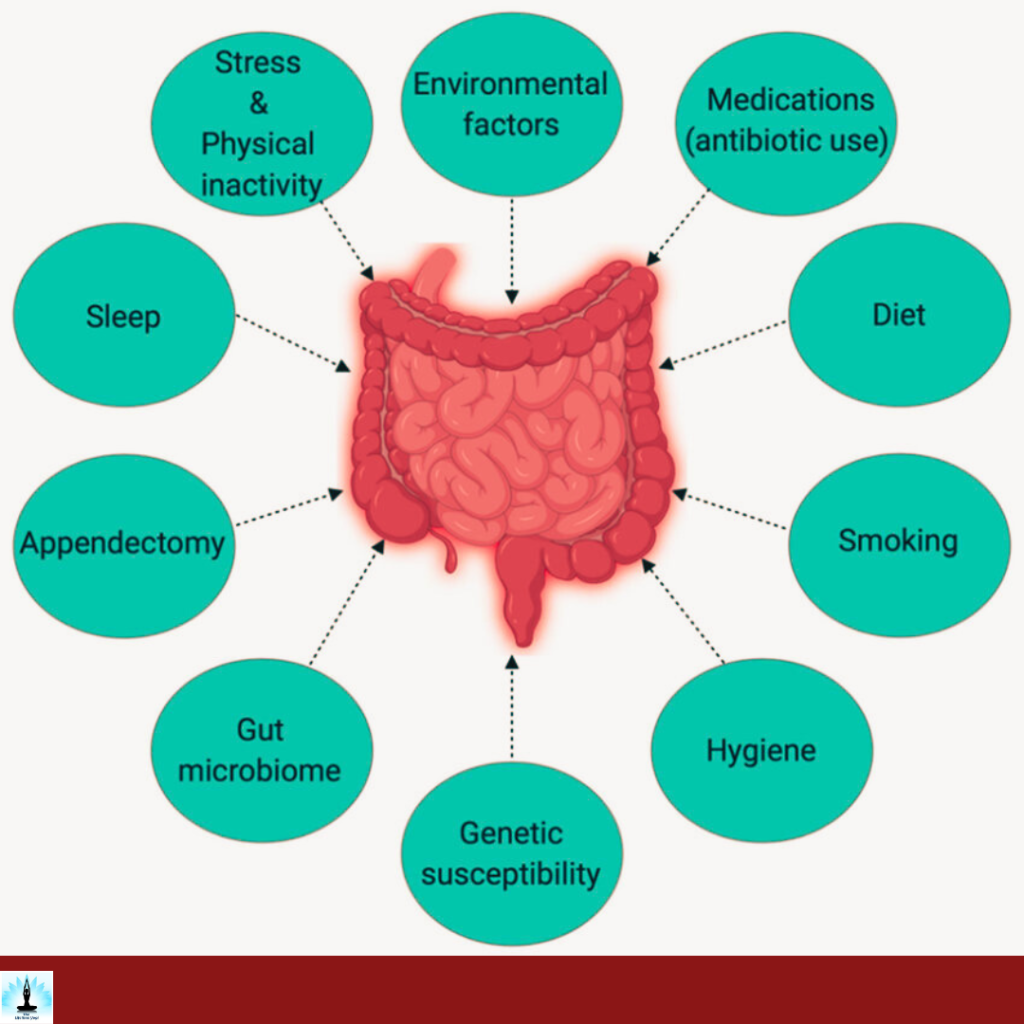
Inflammatory Bowel Disease encompasses conditions like Crohn’s disease and ulcerative colitis, characterized by inflammation of the digestive tract. The symptoms, ranging from abdominal pain to diarrhea, can significantly diminish the quality of life. Traditional medical interventions are essential, but integrating holistic practices like yoga can offer a multi-faceted approach to IBD management.
The Role of Yoga in IBD Management
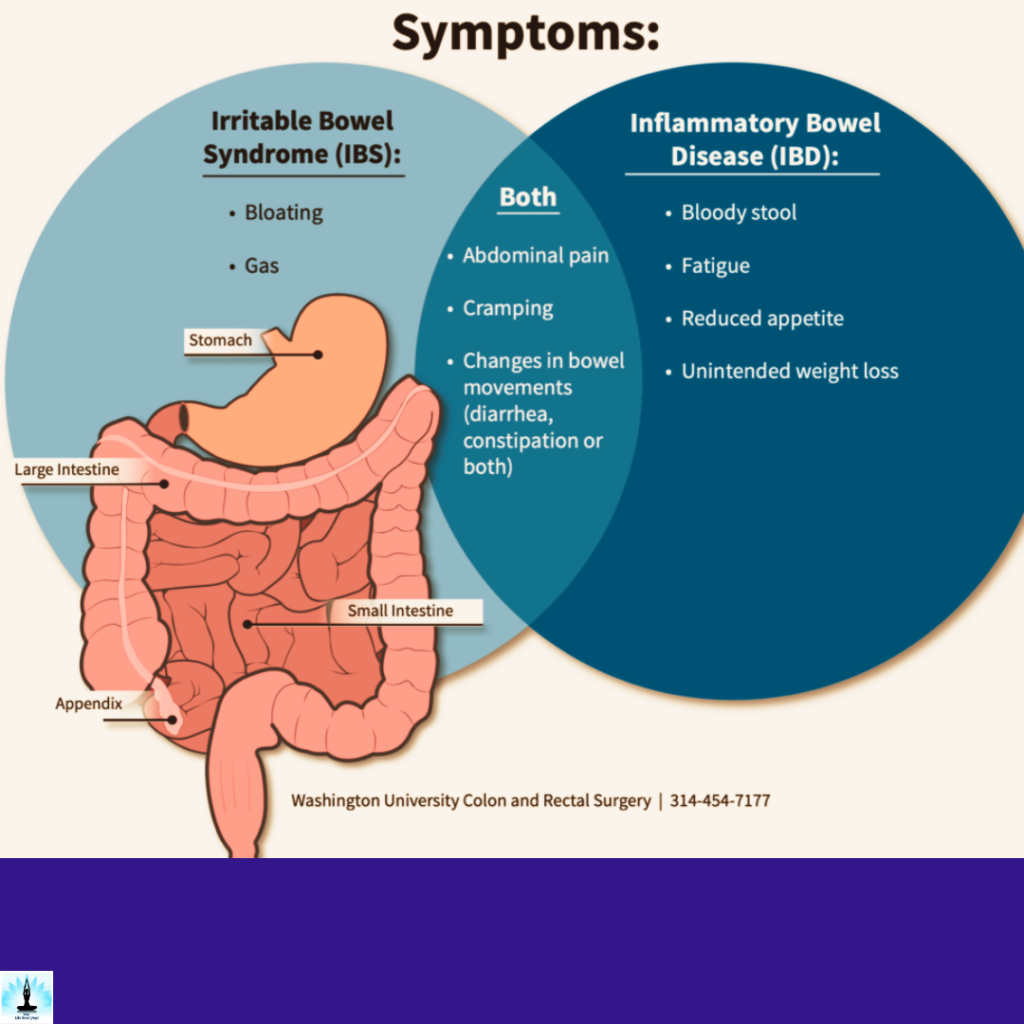
Yoga, an ancient practice originating in India, focuses on uniting the body, mind, and spirit. Its potential benefits for IBD management lie in its ability to reduce stress, promote relaxation, and improve overall body awareness. Incorporating yoga into one’s routine can lead to a more balanced and holistic approach to IBD management.
Benefits of Yoga for IBD
Yoga offers a range of potential benefits for individuals dealing with Inflammatory Bowel Disease (IBD). While it’s important to note that yoga is a complementary practice and should not replace medical treatment, its holistic approach can contribute positively to overall well-being and help manage IBD symptoms. Here are some key benefits of incorporating yoga into an IBD management routine:
Stress Reduction
Chronic stress is known to exacerbate IBD symptoms. Yoga places significant emphasis on relaxation, deep breathing, and mindfulness, which can help reduce stress levels. Practices like deep breathing (pranayama) and meditation promote a sense of calm and help alleviate anxiety, potentially leading to fewer symptom flare-ups.
Physical Comfort
IBD can cause discomfort and pain in the abdominal region. Gentle yoga poses can offer relief by stretching and strengthening muscles around the abdomen, promoting improved posture and reducing tension in the area.
Digestive Aid
Certain yoga postures involve gentle twists and stretches that can stimulate blood flow to the digestive organs, potentially aiding in digestion and alleviating issues like bloating and gas.
Improved Blood Circulation
Yoga encourages blood flow throughout the body, which can contribute to better circulation and oxygenation of tissues. Enhanced blood circulation supports the body’s natural healing processes and can contribute to overall well-being.
Flexibility and Mobility
Regular practice of yoga can improve flexibility and joint mobility, which can be particularly beneficial for individuals dealing with IBD-related discomfort and stiffness.
Balanced Nervous System
Yoga techniques such as pranayama (breath control) can help balance the autonomic nervous system. This balance can contribute to a reduction in stress responses and a more stable internal environment.
Enhanced Sleep Quality
IBD can disrupt sleep patterns. Engaging in regular yoga practice, especially relaxation and meditation techniques, can improve sleep quality and promote restful nights.
Yoga Poses for IBD Management
Engaging in specific yoga poses can be a valuable addition to your management strategy for Inflammatory Bowel Disease (IBD). These poses focus on promoting relaxation, easing discomfort, and supporting digestive health. Remember to practice under the guidance of a qualified yoga instructor and consult your healthcare professional before starting any new exercise routine. Here are some yoga poses that can be beneficial for IBD management:
Cat-Cow Stretch (Marjaryasana-Bitilasana):

- Start on your hands and knees, aligning your wrists under your shoulders and knees under your hips.
- Inhale, arch your back, lift your tailbone, and look up (Cow Pose).
- Exhale, round your spine, tuck your chin to your chest, and draw your belly button toward your spine (Cat Pose).
- This dynamic sequence can improve spinal flexibility and stimulate digestion.
Bridge Pose (Setu Bandhasana):
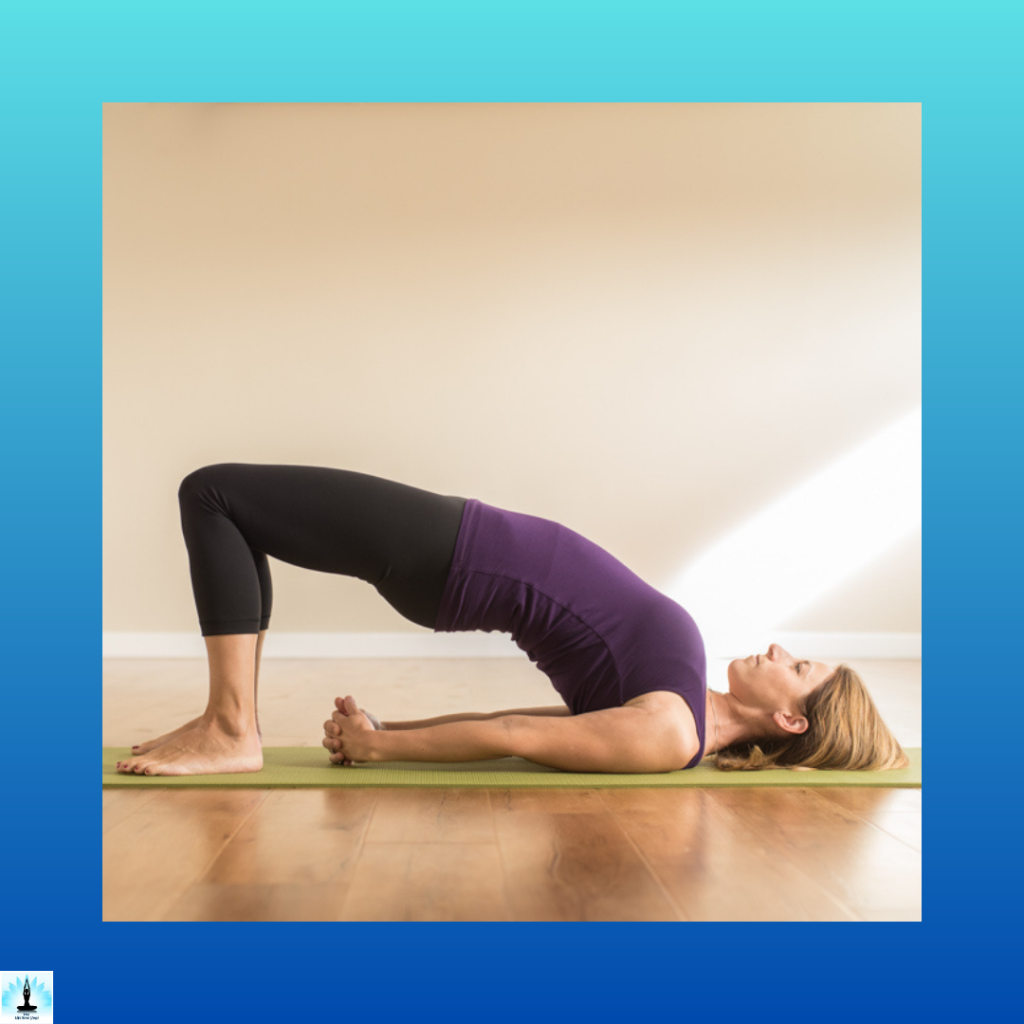
- Lie on your back with your knees bent and feet flat on the floor, hip-width apart.
- Press your feet and arms into the floor, lifting your hips toward the ceiling.
- Clasp your hands beneath your pelvis and roll your shoulders underneath you.
- Bridge Pose strengthens the lower back, glutes, and core while promoting circulation in the abdominal area.
Supine Twist (Supta Matsyendrasana):
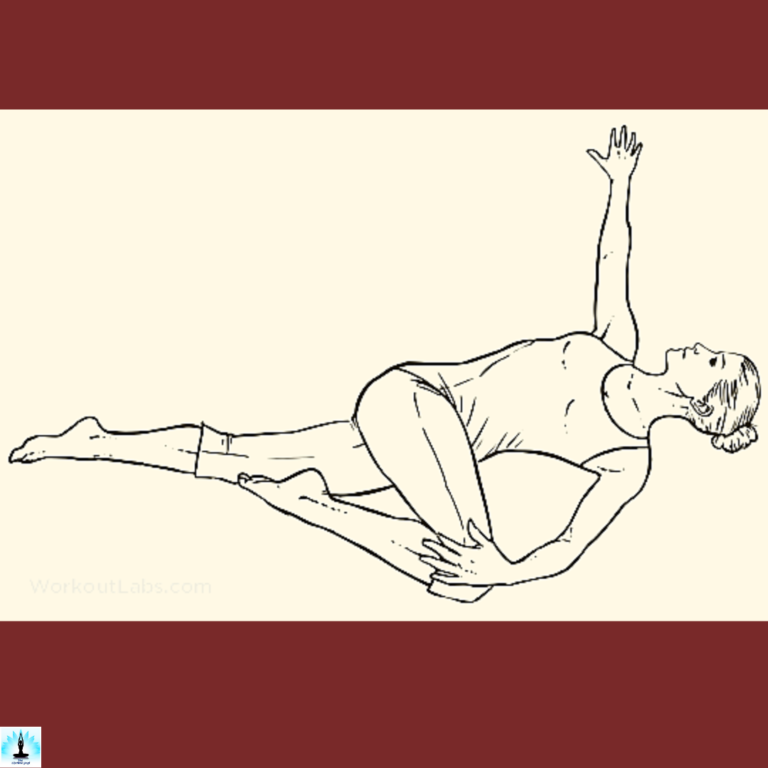
- Lie on your back and bring your right knee toward your chest.
- Gently guide your right knee across your body toward the left, extending your right arm to the side.
- Turn your head to the right, keeping both shoulders grounded.
- This twist can help alleviate digestive discomfort and improve spinal mobility.
Seated Forward Fold (Paschimottanasana):
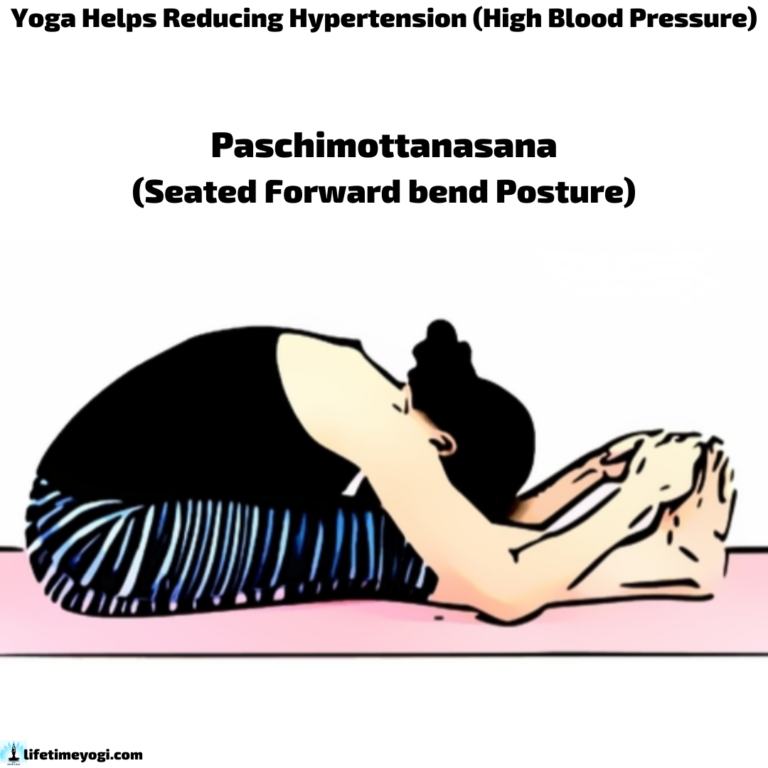
- Sit on the floor with your legs extended in front of you.
- Hinge at your hips and reach forward to hold your shins, ankles, or feet.
- Lengthen your spine as you fold forward, aiming to keep your back straight.
- Seated Forward Fold can gently massage the abdominal organs and promote relaxation.
Pranayama Techniques for Digestive Health
Pranayama, the practice of controlled and mindful breathing, can play a significant role in promoting digestive health and managing conditions like Inflammatory Bowel Disease (IBD). These breathing techniques help calm the mind, reduce stress, and stimulate the digestive system. As with any yoga practice, consult your healthcare provider before incorporating pranayama into your routine. Here are some pranayama techniques for digestive well-being:
Diaphragmatic Breathing (Belly Breathing):
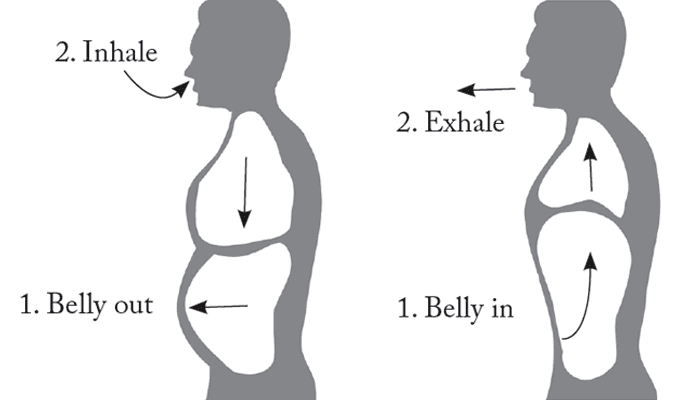
- Find a comfortable seated position with your spine erect.
- Place one hand on your chest and the other on your abdomen.
- Inhale deeply through your nose, allowing your abdomen to rise and expand.
- Exhale slowly through your nose, feeling your abdomen contract.
- Focus on the movement of your diaphragm and the expansion of your belly.
- Diaphragmatic breathing massages the digestive organs, promoting healthy digestion.
Nadi Shodhana (Alternate Nostril Breathing):
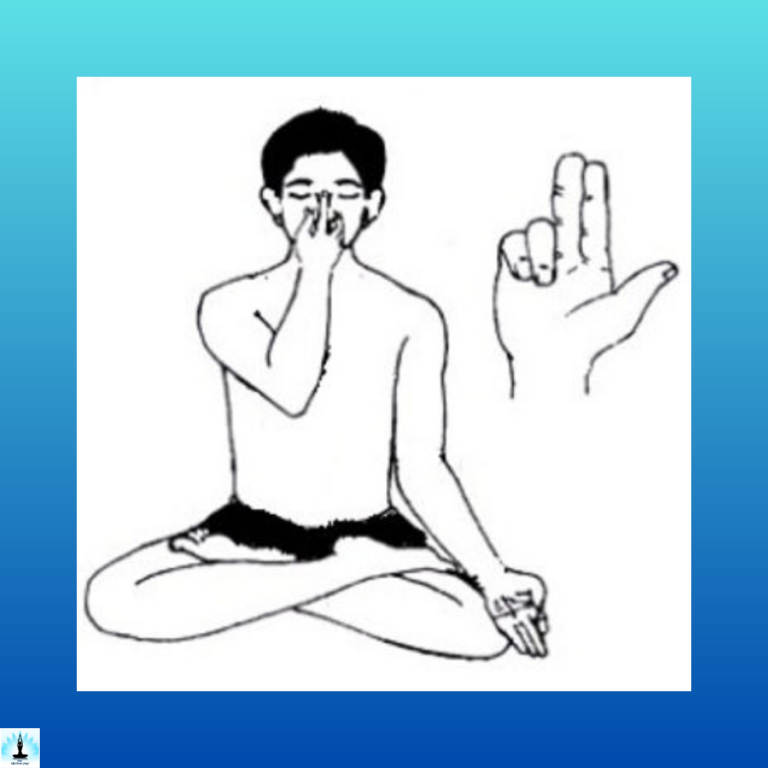
- Sit comfortably and use your right thumb to close your right nostril.
- Inhale deeply through your left nostril.
- Use your right ring finger to close your left nostril, releasing your right nostril.
- Exhale through your right nostril.
- Inhale through your right nostril, then close it with your right thumb.
- Release your left nostril and exhale through it.
- This alternate nostril breathing technique balances the nervous system and encourages relaxation, which can positively impact digestive function.
Agni Sara Kriya and Pranayama (Fire-Breath):

- Stand with your feet shoulder-width apart, knees slightly bent.
- Exhale forcefully and completely through your mouth, pulling your abdomen toward your spine.
- Release and allow your abdomen to relax as you inhale gently through your nose.
- This dynamic breath helps stimulate the abdominal organs and enhance digestion.
Healing Mudras for IBD Relief
Mudras, hand gestures that facilitate the flow of energy within the body, can be employed as a complementary practice to aid in the relief of Inflammatory Bowel Disease (IBD) symptoms. These gestures are believed to influence the body’s energy pathways and promote healing. While mudras should not replace medical treatment, they can be a beneficial addition to your IBD management routine. Here are some healing mudras to consider:
Apana Mudra:
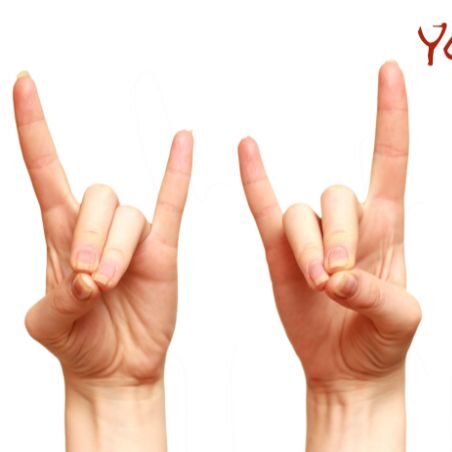
- Gently touch the tips of your thumb, middle, and ring fingers together, keeping the other fingers extended.
- Hold the mudra with both hands and rest your hands on your thighs or knees.
- Apana mudra is thought to support the elimination of waste and toxins from the body, aiding in digestion and promoting a sense of release.
Varuna Mudra:

- Touch the tips of your pinky finger and thumb while keeping the other fingers extended.
- Hold this mudra with both hands, resting them on your thighs or knees.
- Varuna mudra is believed to balance the water element within the body, potentially assisting in maintaining fluid balance and hydration.
Prana Mudra:
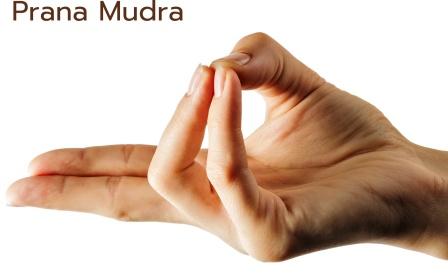
- Join the tips of your thumb, ring finger, and pinky finger while keeping the other fingers extended.
- Maintain the mudra with both hands, resting them on your thighs or knees.
- Prana mudra is associated with promoting vitality and energy flow throughout the body, which can support overall wellness.
Linga Mudra:
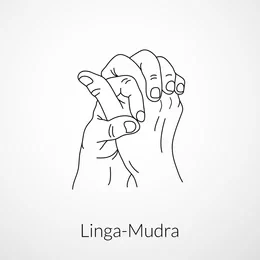
- Interlock your fingers, intertwining them like clasping your hands but with the left thumb pointing upward.
- Place your hands in front of your lower abdomen or navel area.
- Linga mudra is believed to generate warmth within the body and stimulate digestive processes.
Integrating Yoga into Lifestyle
Adopting a regular yoga practice can contribute significantly to IBD management. Consider the following tips:
- Start Slowly: If you’re new to yoga, begin with gentle poses and gradually progress to more advanced postures.
- Consistency is Key: Aim for a consistent practice to reap the long-term benefits of yoga for IBD management.
- Listen to Your Body: Be mindful of your body’s signals. If a pose feels uncomfortable or causes pain, modify or skip it.
Precautions and Consultation
When considering the incorporation of yoga into your Inflammatory Bowel Disease (IBD) management plan, it’s essential to take certain precautions and seek professional guidance. While yoga can offer potential benefits, it’s important to prioritize your safety and well-being. Here are some precautions to keep in mind and the importance of consulting with healthcare professionals:
1. Consultation with Healthcare Professionals:
Before beginning any new exercise regimen, including yoga, consult your healthcare provider. They can offer personalized guidance based on your individual medical history, IBD condition, and any current treatments you are undergoing.
2. Personalized Approach:
Each individual’s experience with IBD is unique. Your healthcare provider can help tailor a yoga practice that suits your specific needs, taking into account your level of fitness, any physical limitations, and the severity of your IBD symptoms.
3. Avoid Strain and Overexertion:
Listen to your body and avoid pushing yourself too hard. If a pose causes pain, discomfort, or excessive strain, modify or skip it. Your focus should be on comfort and relaxation, not on achieving extreme flexibility or strength.
4. Awareness of Flare-Ups:
Be mindful of your body’s signals, especially during periods of potential flare-ups. It’s wise to adapt your yoga practice according to your current physical condition and energy levels.
5. Hydration and Nutrition:
Stay hydrated and maintain a balanced diet that aligns with your IBD treatment plan. Proper nutrition and hydration are vital for managing IBD effectively.
6. Regular Monitoring:
Keep your healthcare provider informed about your yoga practice and any changes you experience. Regular check-ins can help ensure that your yoga routine remains aligned with your overall health goals.
FAQs on “Yoga Techniques for Managing IBD: Poses, Pranayama, and Mudras”
Here are some frequently asked questions (FAQs) related to “Yoga Techniques for Managing IBD: Poses, Pranayama, and Mudras,” along with their answers:
1. What is the role of yoga in managing Inflammatory Bowel Disease (IBD)?
Yoga can serve as a complementary practice to help manage IBD. It promotes relaxation, reduces stress, and supports overall well-being, potentially alleviating symptoms and improving quality of life.
2. Can yoga cure IBD?
No, yoga cannot cure IBD. It can, however, contribute to symptom relief and enhance your overall wellness by reducing stress, promoting relaxation, and supporting digestion.
3. Are there specific yoga poses that can help manage IBD symptoms?
Yes, certain yoga poses like Child’s Pose, Cat-Cow Stretch, and Bridge Pose can aid in managing IBD symptoms. These poses focus on relaxation, gentle stretches, and core strengthening, potentially alleviating discomfort.
4. How does pranayama (breath control) benefit IBD management?
Pranayama techniques promote relaxation, reduce stress, and stimulate the digestive system. Deep breathing exercises can massage abdominal organs, improve circulation, and potentially aid in digestion.
5. What are mudras, and how do they help with IBD relief?
Mudras are hand gestures that channel energy within the body. Specific mudras like Apana Mudra and Varuna Mudra are believed to support digestion, promote fluid balance, and aid in releasing toxins.
6. Can anyone with IBD practice yoga?
It’s important to consult your healthcare provider before starting any new exercise regimen, including yoga. Your healthcare provider can offer personalized guidance based on your individual condition and needs.
7. Is yoga a substitute for medical treatment in managing IBD?
No, yoga is not a substitute for medical treatment. It should be seen as a complementary practice that supports your overall well-being alongside your prescribed medical treatment plan.
8. How often should I practice yoga for managing my IBD?
The frequency of your yoga practice depends on your individual condition and comfort level. Starting with a few sessions per week and gradually increasing based on your tolerance is a good approach. Consult your healthcare provider for guidance.
9. Can yoga worsen my IBD symptoms during a flare-up?
Intense or strenuous yoga poses might exacerbate symptoms during a flare-up. It’s advisable to opt for gentle and restorative practices during these times. Listen to your body and make modifications as needed.
10. Can I practice yoga if I’m experiencing abdominal pain due to IBD?
If you’re experiencing abdominal pain, it’s important to consult your healthcare provider before practicing yoga. They can advise you on suitable poses and modifications that won’t exacerbate your discomfort.
Conclusion
The ancient wisdom of yoga, with its emphasis on balance, mindfulness, and holistic well-being, holds promise as a complementary therapy for managing Inflammatory Bowel Disease. By incorporating specific yoga poses, pranayama techniques, and mudras into your routine, you can embark on a journey toward enhanced IBD management and improved overall quality of life. Remember, a holistic approach encompasses not only physical health but also mental and emotional well-being – something yoga has been nurturing for centuries.
